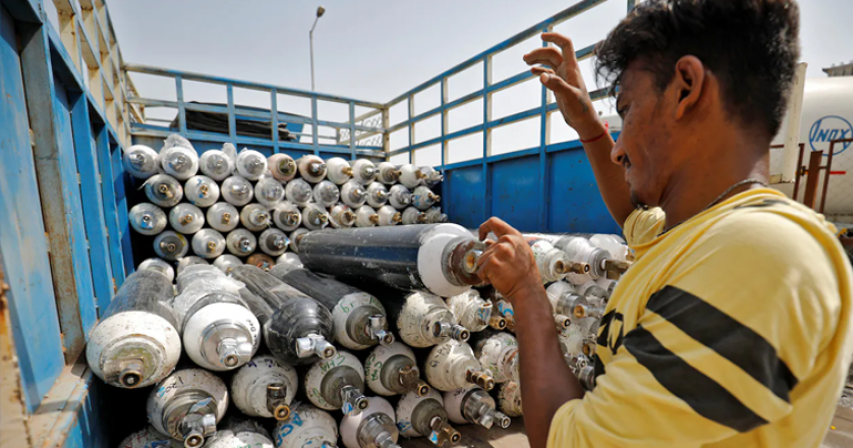NEW DELHI: Sirens wailing, a police convoy escorting a tanker carrying oxygen reached a hospital in India's capital just in time, to the huge relief of doctors and relatives of COVID-19 patients counting on the supply to stave off death.
India on Friday (Apr 23) posted the world's largest daily COVID-19 caseload for a second day, with 332,730 new cases and 2,263 deaths, as the pandemic spiralled out of control.
A dire shortage of oxygen - essential for the survival of critical COVID-19 patients - has meant states are closely guarding their supplies and even posting armed police at production plants to ensure security.
Several hospitals, including Shanti Mukand in the west of the New Delhi with 110 COVID-19 patients, said they had almost exhausted their oxygen supplies on Thursday. The prospects for patients and their distraught families was disastrous.
"The hospital came to us and told us to make our own arrangements," said Bhirendra Kumar, whose COVID-positive father was admitted 10 days ago.
"We're not an oxygen company - how can we make our own arrangements?"
Earlier in the day, the hospital's chief executive, Sunil Saggar, choked back tears as he described the decision to discharge some patients because the lack of oxygen meant there was nothing his hospital could do to help.
At the hospital's oxygen supplier, Inox in Uttar Pradesh state about an hour from the capital, a line of a dozen trucks from cities across north India waited to fill up.
Half a dozen drivers told Reuters they had been waiting for as long as three days to get their trucks filled, as surging demand from hospitals in the capital and elsewhere outstripped supply.
Vakeel, who goes by one name, has been working as a driver for Inox since 1994. He said the level of demand was unprecedented.
"Every hospital wants three or four times what they did before," he said.
Source: CNA

Comments